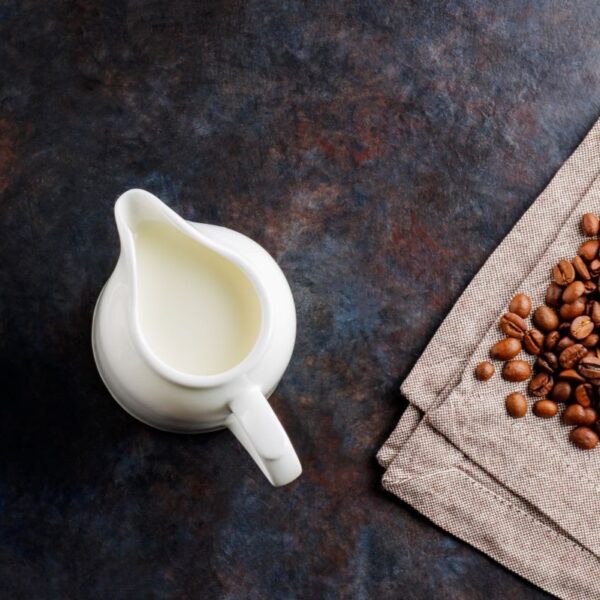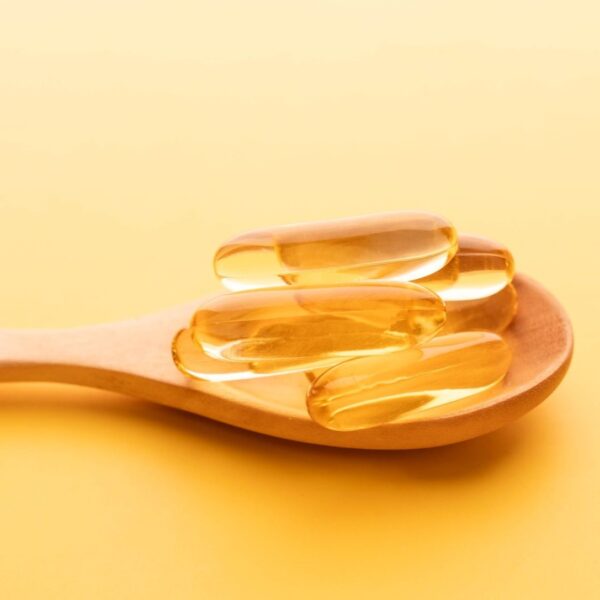Isoleucine, one of the twenty standard amino acids, is a critical macronutrient that serves various functions in the human body. It is one of the three branched-chain amino acids (BCAAs), alongside leucine and valine, essential for protein synthesis and muscle tissue repair. In the food and nutrition industry context, isoleucine has become increasingly significant due to its various health benefits and roles in producing high-quality food products. This article will critically examine the use and applications of isoleucine in the food and nutrition industry.
Besides its biological role as a nutrient, isoleucine has also been shown to regulate glucose metabolism. It is an essential component of many proteins. Isoleucine is in the gamma chain of fetal hemoglobin and must be present for the protein to form.
Isoleucine supplementation can help reduce muscle soreness, decrease recovery time, and prevent muscle protein breakdown. It plays a crucial role in maintaining blood sugar levels and supporting the immune system. It aids in wound healing and promotes muscle recovery.
What is Isoleucine?
Isoleucine is an α-amino acid used in the biosynthesis of proteins with the chemical formula C₆H₁₃NO₂. It contains an α-amino group (which is in the protonated −NH+3 form under biological conditions), an α-carboxylic acid group (which is in the deprotonated −COO− form under biological conditions), and a hydrocarbon side chain with a branch (a central carbon atom bound to three other carbon atoms). Isoleucine is a white crystalline powder whose chemical structure is given in the image below:
Source: Wikipedia
Production of Isoleucine
This branched-chain amino acid is currently produced both by extraction of protein hydrolysates and by fermentation with classically derived mutants of C. glutamicum. Isoleucine synthesis starts with the deamination of threonine, which makes α-ketobutyrate. Pyruvate has one less carbon and is the corresponding α-keto acid for valine synthesis. Parallel pathways with shared enzymes then convert α-ketobutyrate and pyruvate to isoleucine and valine.
Sources of Isoleucine
Isoleucine is abundantly available in various food items which we consume in our day-to-day life. Isoleucine is plentiful in meat, fish, poultry, eggs, cheese, lentils, nuts, and seeds.
According to research in Poland, the dietary concentration of Isoleucine in various food items consumed is provided in the table below:
| Food Categories | Rank | % of Contribution | Cumulative % of Contribution |
| meat and meat products | 1 | 41.3 | 41.3 |
| grain products | 2 | 21.3 | 62.6 |
| milk and dairy products | 3 | 19.1 | 81.7 |
| vegetables | 4 | 6.9 | 88.6 |
| eggs | 5 | 4.3 | 92.9 |
Use and Applications of Isoleucine in the Food & Nutraceutical Industry
Isoleucine can be used in the food and nutrition industry as a dietary supplement & nutraceutical. It is added to food products to fortify them or be a part of nutrient premixes providing essential nutrients.
As an essential amino acid, isoleucine must be obtained from daily diet or supplementation. Food products like meat, fish, poultry, eggs, cheese, lentils, nuts, and seeds are naturally rich in isoleucine. Dietary supplements also regularly include isoleucine.
Isoleucine supplementation can help reduce muscle soreness, decrease recovery time, and prevent muscle protein breakdown. It plays a crucial role in maintaining blood sugar levels and supporting the immune system. It aids in wound healing and promotes muscle recovery.
Product Examples
| Nutraceutical & Supplements | Dietary Supplements, Mineral Supplements, Whey Protein |
| Beverages | Functional Beverages, Sports Drinks, Protein Drinks |
Properties of Isoleucine
| Typical Properties | Value |
| Molar mass | 131.17 g·mol−1 |
| Appearance | White Crystalline Powder |
| Density | 1.207 g/cm3 (20 °C) |
| Melting point | 290 °C |
| Boiling point | 225.8 °C |
| Solubility in water | 41.2 mg/ml at 25° C |
| Acidity (pKa) | 2.36 |
Source: SCBT
Typical Formulations
Dietary Supplement
A palatable, orally ingestible nutrient supplement composition for athletes, comprising:
| Agent | Composition |
| L-Isoleucine | 15.50% |
| L-Leucine | 16.00% |
| L-Valine | 10.69% |
| L-Lysine | 13.92% |
| L-Methionine | 2.10% |
| L-Phenylalanine | 0.41% |
| L-Threonine | 2.90% |
| L-Tryptophan | 1.02% |
| L-Alanine | 9.30% |
| L-Arginine | 8.22% |
| L-Aspartic Acid | 0.32% |
| Aminoacetic Acid | 3.91% |
| L-Histidine | 4.02% |
| L-Proline | 8.38% |
| L-Serine | 2.39% |
| L-Tyrosine | 0.47% |
| L-Cysteine | 0.45% |
Source: Google Patents
Formulation Considerations
Related Chemical Moieties
| L- Isoleucine | L-isoleucine is the L-enantiomer of isoleucine. It is an aspartate family amino acid. It is also a metabolite in humans, yeast, E.coli, and plants. This amino acid is essential to athletes as it helps boost energy and helps the body recover from training. It helps promote muscle recovery after exercise. |
| D-Isoleucine | D-isoleucine is the D-enantiomer of isoleucine. It has a role as a bacterial metabolite and a Saccharomyces cerevisiae metabolite. It is a conjugate base of D-isoleucinium and a conjugate acid of D-isoleucinate. D-isoleucine helps to promote glucose consumption and uptake. |
| DL- Isoleucine | 2-amino-3-methylpentanoic acid is a branched-chain amino acid that consists of 3-methylpentanoic acid bearing an amino substituent at position 2. It is both an alpha-amino acid and a branched-chain amino acid. |
Dosage
Isoleucine is one of the three branched-chain amino acids and appears to promote glucose consumption and uptake. Isoleucine may have roles as an anti-catabolic agent (without promoting synthesis) similar to HMB.
Since efficacy is identified at 0.3-0.45g/kg in rats (the latter being the maximal dose, increasing beyond that does nothing more due to no further absorption), a recommended dosage range for isoleucine per se is 48-72mg/kg (for a 150lb person, 3.3-4.9g). As isoleucine from food products is also bioactive, supplemental doses of isoleucine taken with meals can be lower (i.e., if eating a meal with 50g protein that contains 4g isoleucine already, then a 10.8g dose is no longer needed, and 6.8g will suffice).
Sensory Attributes of Isoleucine
Isoleucine has a bitter taste and an unpleasant taste leading to low palatability. You can blend isoleucine with flavor enhancers or agents to make it more palatable.
Nutritional Effects of Isoleucine
As a nutraceutical ingredient, isoleucine finds application in various scenarios like blood glucose regulation, muscle recovery, building, and immunomodulation, and it helps in the biosynthesis of many different proteins. In the sports industry, isoleucine supplementation improves energy uptake, reduces fatigue, improves muscle strength, etc.
- Glucose Metabolism Regulator: Isoleucine improves glucose metabolism, as evident from the increase of insulin-independent glucose uptake in vitro.
- Improves Muscle Recovery and Building: Isoleucine can increase muscle synthesis and prevent muscle damage during exercise. It also promotes muscular endurance by enhancing muscle recovery.
- Immunomodulator: Isoleucine has been found to improve the immune system, immune organs, cells, and reactive substances. It can also help express host defense peptides that regulate host innate and adaptive immunity.
- Blood Sugar Control: As Isoleucine plays a vital role in insulin-independent glucose uptake in vitro, it also dramatically improves blood sugar control.
Safety & Regulatory Considerations
Isoleucine produced by fermentation is FDA-approved as an additive in all Food and Feed products. It is Generally Recognised as a Safe (GRAS) ingredient for use as a nutraceutical supplement. A reasonable daily adult intake of the finished food furnishes at least 6.5 grams of naturally occurring primarily intact protein (based upon 10 percent of the daily allowance for the “reference” adult male recommended by the National Academy of Sciences in “Recommended Dietary Allowances,” NAS Publication No. 1694).
Fun Facts about Isoleucine
- Isoleucine is one of the nine essential amino acids, which means the human body cannot produce it independently. Therefore, we need to obtain it from our diet or supplements.
- Isoleucine, along with leucine and valine, forms the trio of branched-chain amino acids (BCAAs), named so because of their chemical structure. They make up about one-third of muscle proteins.
- Unlike most amino acids metabolized in the liver, BCAAs like isoleucine are primarily broken down in the muscles. This unique characteristic makes them an important energy source during prolonged exercise.
- Isoleucine has been shown to help regulate blood sugar levels, which could have important implications for managing conditions like diabetes.
- As a building block of protein, isoleucine is crucial for repairing tissues and healing wounds.
- Supplements containing isoleucine and other BCAAs are popular among athletes and fitness enthusiasts. They are thought to enhance muscle recovery, improve endurance, and stimulate protein synthesis.
Additional Sources
- ScienceDirect – Isoleucine
- Wikipedia – Isoleucine
- Mr Supplement – Isoleucine
- Medical News Today – Isoleucine: Benefits, Sources, and Side Effects
- NCBI – Isoleucine metabolism in humans – its role in nitrogen metabolism, and disorders associated with its metabolic pathway
- Wikipedia – Structural formula of L-Isoleucine
- Santa Cruz Biotechnology – L-Isoleucine
- Google Patents – Methods for purifying L-isoleucine
- PubChem – L-Isoleucine
- PubChem – D-Isoleucine
- Examine.com – Isoleucine
- FDA – Code of Federal Regulations Title 21: Isoleucine
- EFSA – Safety of Isoleucine as a Novel Food Pursuant to Regulation (EU) 2015/2283







